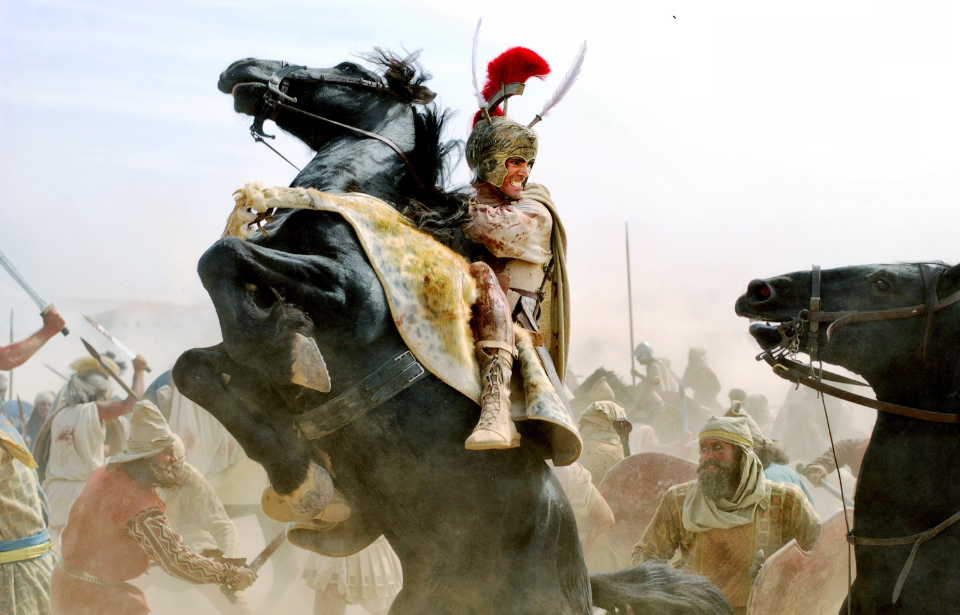Alexander III, King of Macedon, has been remembered as one of the most successful military commanders in history, largely due to the claim that he remained undefeated in battle up until his death. It’s no wonder, then, that Alexander the Great’s horse also claims the same renown. His valiant steed is almost as well known as his master, certainly earning a place among the most famous horses in history.
Taming Bucephalus
Alexander the Great’s horse, Bucephalus, is first recounted in the tale of their meeting. They came into contact after Alexander’s father, King Philip II, considered purchasing him from a horse dealer for an extremely high sum. The King’s interest soon waned, though, as the horse proved impossible to tame. Alexander took an immediate liking to the animal which was extremely well-bred, coming from the “best Thessalian” bloodline. He is described as large and black, with a white star on his head.
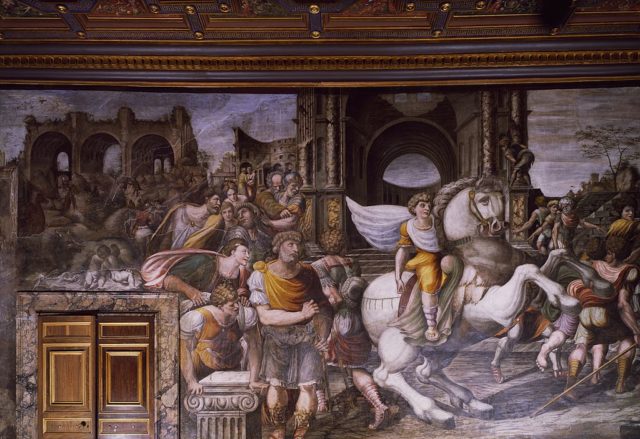
Alexander decided to make a deal with his father for the horse. Should the young prince, at only 12 years old, be able to tame him, then his father would pay, but if he could not then he would have to pay. Where others had attempted to train the horse with brute force, the young boy approached him in a calm manner. Alexander grabbed the horse’s bridle, quickly realizing that it was the steed’s shadow that had caused him to lash out.
Growing battle prowess
Once Alexander turned the horse so that the shadow went away, he became much more agreeable. Plutarch of Chaeronea, author of Life of Alexander, detailed that “[Alexander] found him begin to grow eager and fiery, he let fall his upper garment softly, and with one nimble leap securely mounted him (…) he let him go at full speed, inciting him now with a commanding voice, and urging him also with his heel.”
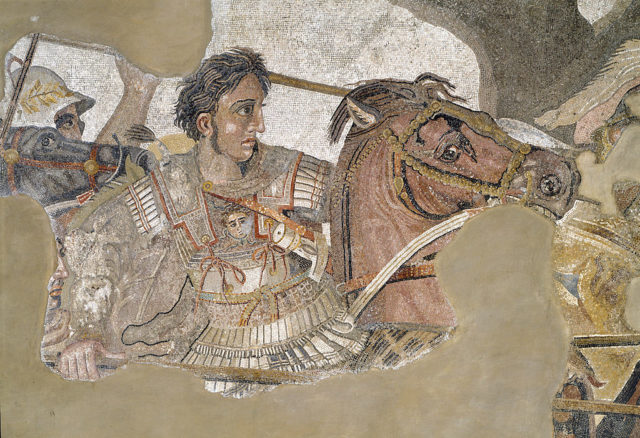
Alexander named this new and eager mount Bucephalus, supposedly because of an ox-shaped brand on his rear. The two became inseparable, as Bucephalus was Alexander’s favored ride into battle. According to many sources, only Alexander the Great was able to ride the horse. Bucephalus did, however, begrudgingly let the grooms tend to him.
Thick as thieves
Bucephalus was ridden into every battle that Alexander waged for nearly 20 years, although he certainly wasn’t immune from injury. One ancient chronicler recounted that the horse was injured during his master’s attack on Thebes. Yet he was so loyal to Alexander that he refused to let him get on another mount. How exactly Bucephalus did this wasn’t recorded, but he was certainly known to be fearless and was well respected.
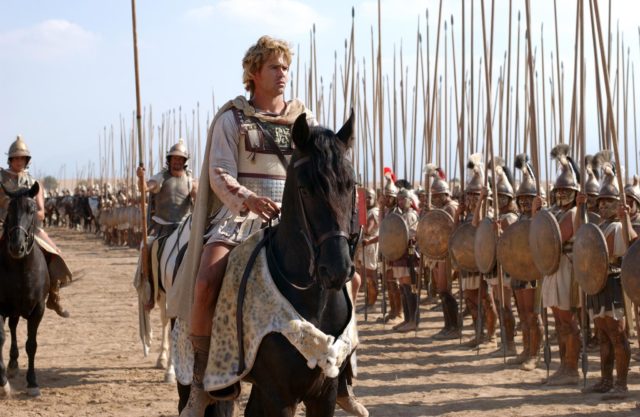
The loyalty between horse and rider extended both ways. Following the defeat of Darius III, Bucephalus was captured by enemy forces when Alexander was away from the camp. When he returned, his reaction was so severe – threatening to lay waste to the region, fell every tree, and kill every inhabitant – that his mount was quickly returned while the captors begged for mercy.
Death of a warrior
After faithfully serving as Alexander the Great’s horse for many years, Bucephalus died in 326 BC. The nature of his death is debated by historians. Some believe that he succumbed to wounds sustained during the Battle of Hydaspes, which also happened to be his master’s last battle. In another version of the story, a writer named Onesicritus, who had been with Alexander during his travels, said he died of old age.
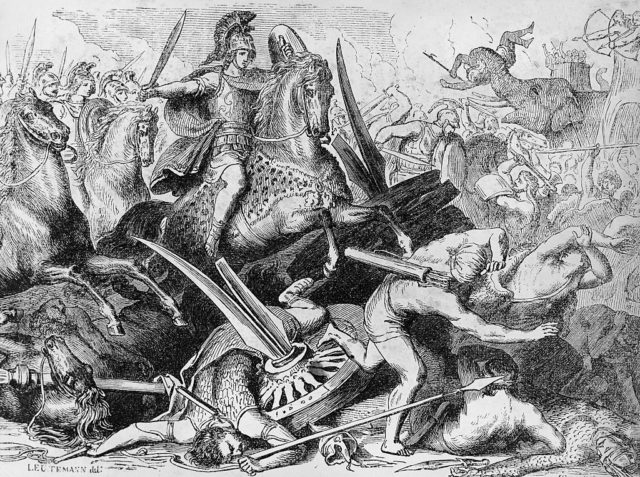
Either way, the horse made it to the honorable age of 30 before he died. The death of his longtime companion hit Alexander very hard; as much as Bucephalus was vital to Alexander’s military success, he was also extremely loved. In honor of Bucephalus, Alexander founded the city of Bucephala which sat along the river Hydaspes, where he died. The city has since been renamed Jhelum and is located in modern-day Pakistan.
The father of legendary horses
Bucephala was detailed in the medieval book Livre of Alexandre. This book also contains a poem dedicated to Bucephalus, illustrating that the horse went on to become a figure of legend. One of these poems indicated that Bucephalus fathered supernatural horses during his travels with Alexander. It was believed that when the party stopped to make camp, the horse went off to breed with the local mares.
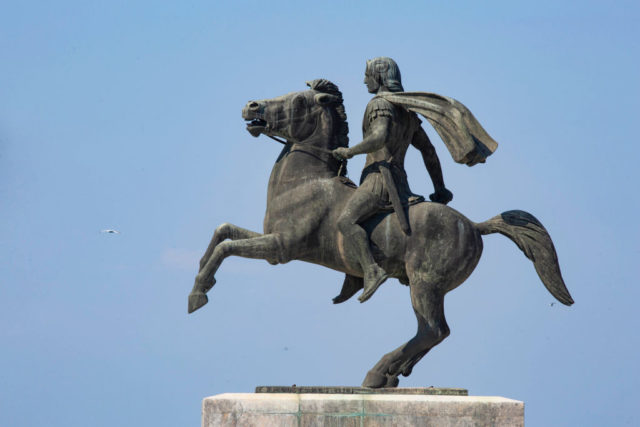
The wild horses in Afghanistan and Persia were said to conceive unicorns. When they were born, they were collected by one of the local royal families. They remained in their possession until two sides of the family had a disagreement about the ownership of the unicorns, which were destroyed in the process.
More from us: The Librarians Who Rode Through the Kentucky Mountains to Deliver Books By Horseback
The legend of the unicorns never really went away, as Marco Polo recounted the same tale in his journals. “There used to be horses in this province that were descended from Alexander’s horse Bucephalus by mares that had conceived from him(…)they were all born with a horn on their foreheads.”
